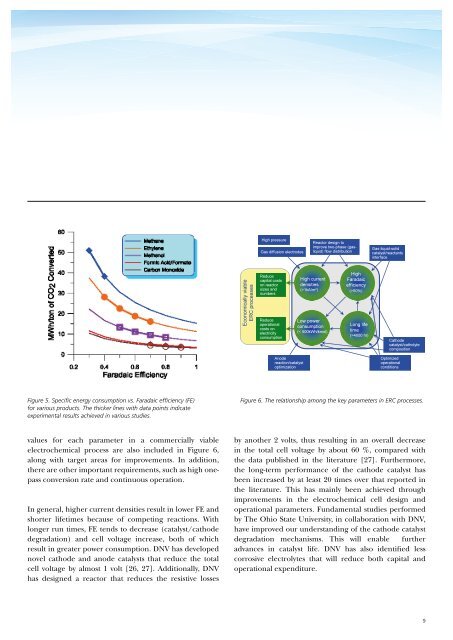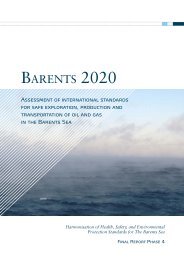Carbon Dioxide Utilization - DNV
Carbon Dioxide Utilization - DNV
Carbon Dioxide Utilization - DNV
You also want an ePaper? Increase the reach of your titles
YUMPU automatically turns print PDFs into web optimized ePapers that Google loves.
Figure 5. Specific energy consumption vs. Faradaic efficiency (FE)for various products. The thicker lines with data points indicateexperimental results achieved in various studies.Figure 6. The relationship among the key parameters in ERC processes.values for each parameter in a commercially viableelectrochemical process are also included in Figure 6,along with target areas for improvements. In addition,there are other important requirements, such as high onepassconversion rate and continuous operation.In general, higher current densities result in lower FE andshorter lifetimes because of competing reactions. Withlonger run times, FE tends to decrease (catalyst/cathodedegradation) and cell voltage increase, both of whichresult in greater power consumption. <strong>DNV</strong> has developednovel cathode and anode catalysts that reduce the totalcell voltage by almost 1 volt [26, 27]. Additionally, <strong>DNV</strong>has designed a reactor that reduces the resistive lossesby another 2 volts, thus resulting in an overall decreasein the total cell voltage by about 60 %, compared withthe data published in the literature [27]. Furthermore,the long-term performance of the cathode catalyst hasbeen increased by at least 20 times over that reported inthe literature. This has mainly been achieved throughimprovements in the electrochemical cell design andoperational parameters. Fundamental studies performedby The Ohio State University, in collaboration with <strong>DNV</strong>,have improved our understanding of the cathode catalystdegradation mechanisms. This will enable furtheradvances in catalyst life. <strong>DNV</strong> has also identified lesscorrosive electrolytes that will reduce both capital andoperational expenditure.9





![Risk Based Pipeline Integrity Management [Compatibility Mode] - DNV](https://img.yumpu.com/50424229/1/190x146/risk-based-pipeline-integrity-management-compatibility-mode-dnv.jpg?quality=85)










